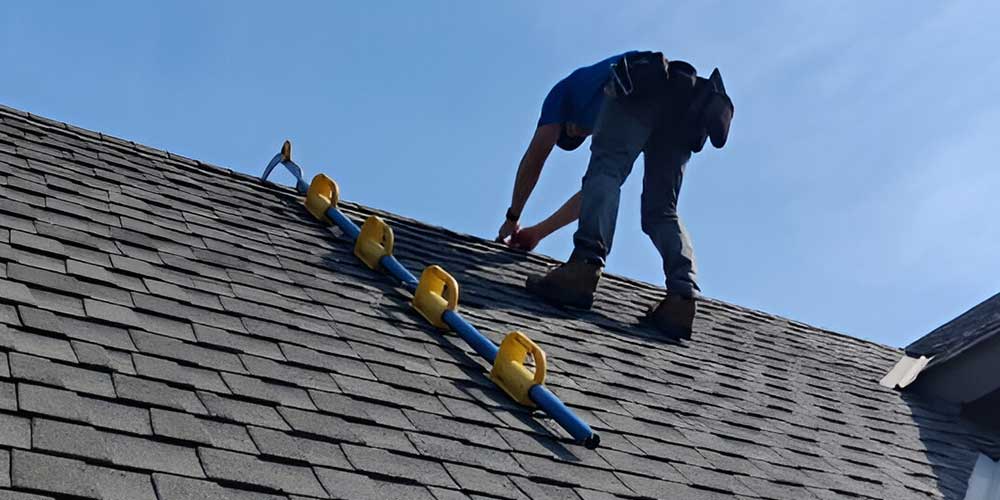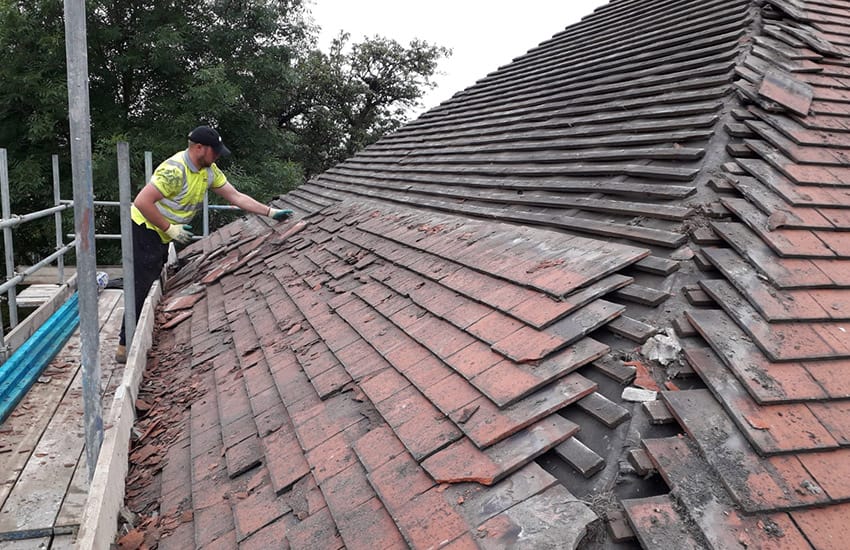Roofing Oahu: Professional Roofer for Your Oahu Residential or commercial property
Understanding the Different Types of Roofing Systems: A Comprehensive Overview for Homeowners
With a range of options-- varying from the conventional gable to the contemporary level-- each kind provides special benefits and obstacles that should line up with the house owner's details needs and ecological factors to consider. As we discover the intricacies of different roof types, it ends up being evident that one dimension does not fit all; the appropriate option might stun you.
Gable Roof Coverings
Saddleback roofs, defined by their triangular form, are amongst the most prominent roofing styles because of their simpleness and performance in dropping water and snow. This layout includes two sloping sides that satisfy at a ridge, permitting efficient drainage and reducing the threat of water buildup. The high pitch commonly associated with saddleback roofs boosts their capability to manage hefty rainfall, making them appropriate for numerous climates.
In addition to their functional benefits, gable roofs offer visual versatility. They can be adapted to numerous architectural styles, from traditional to modern-day homes. The style can additionally suit added features such as dormer home windows, which improve all-natural light and air flow in the attic room room.
Additionally, saddleback roofs give ample room for insulation, adding to power effectiveness. Homeowners can select from a selection of roof covering products, including asphalt roof shingles, steel, and ceramic tiles, additionally boosting personalization choices.
In spite of their advantages, gable roofing systems may call for added assistance in locations susceptible to high winds or heavy snowfall. On the whole, the saddleback roof remains a popular selection because of its blend of functionality, longevity, and aesthetic charm.
Apartment Roofs
Flat roofing systems are usually identified for their minimal layout and useful applications, especially in commercial and commercial settings (oahu roofing). These roofs include a virtually straight or horizontal surface area, which enables simple building and flexible space utilization. While they may lack the aesthetic charm of angled roofs, flat roofs supply many advantages, particularly in urban environments where making the most of room is critical
Among the key benefits of flat roofing systems is their availability. Home owners can utilize the roof covering area for different purposes, such as rooftop gardens, balconies, or photovoltaic panel installments. Furthermore, flat roofings are generally a lot more cost-efficient to preserve and mount compared to their sloped counterparts, as they call for less products and labor.
Usual products made use of for level roofings consist of built-up roof covering (BUR), customized asphalt, and single-ply membranes, each offering distinctive benefits. On the whole, level roof coverings serve as a versatile and functional choice for several home owners and businesses alike.
Hip Roof Coverings
Hip roofings are defined by their sloped sides that assemble on top, creating a ridge. This layout is unique from gable roofings, as all 4 sides of a hip roofing system slope downwards towards the walls, providing a much more stable framework. The angle of the slopes can differ, enabling versatility in building visual appeals and performance.
One of the key benefits of hip roofs is their capability to withstand hefty winds and negative climate condition. The sloped surface areas make it possible for far better water drainage, lowering the risk of leakages and water damages. Additionally, hip roofing systems provide boosted attic room area, which can be made use of for storage and even exchanged comfortable areas.
Nonetheless, constructing a hip roofing can be a lot more complex and expensive than simpler roofing system kinds, such as saddleback roofs. The added material and labor associated with producing the inclines and making sure correct structural honesty can result in greater expenses. Despite these disadvantages, several house owners prefer hip roof coverings for their toughness, aesthetic appeal, and capacity for power effectiveness.
Mansard Roofs
Mansard roofs, frequently identified by their unique four-sided design, function two slopes on each side, with the reduced incline being steeper than the upper. This building design, stemming from France in the 17th century, is not only visually attractive but practical, as it takes full advantage of the usable area in the top floorings of a structure. The high lower incline enables even more clearance, making it a suitable option for lofts or attics, which can be exchanged living spaces.
Mansard roofings are defined by their flexibility, fitting different architectural styles, from typical to modern-day. They can be created with various materials, including asphalt tiles, slate, or steel, supplying home owners with a variety of choices to match their spending plans and choices. Furthermore, the design allows for the assimilation of dormer home windows, boosting click for more info natural light and ventilation in the top levels.
However, it is necessary to consider the potential drawbacks. Mansard roofings may require even more maintenance due to the intricacy of their style, and their high slopes can be challenging for have a peek at these guys snow and rainfall runoff. Overall, mansard roofs incorporate beauty with practicality, making them a preferred choice amongst house owners looking for distinct architectural functions.
Shed Roofings
As homeowners significantly seek simpleness and performance in their architectural designs, dropped roofs have actually become a preferred selection. Characterized by a solitary sloping plane, a shed roofing presents a minimalist visual that complements various home styles, from contemporary to rustic.
One of the key advantages of a shed roofing is its uncomplicated building, which often equates to decrease labor and material expenses. This style allows for effective water drain, reducing the threat of leaks and water damage. In addition, the vertical incline supplies ample room for skylights, boosting natural light within the inside.
Lost roofs likewise supply flexibility in regards to use. They can be efficiently incorporated into additions, garages, or outside frameworks like sheds and pavilions. Furthermore, this roofing style can accommodate different roof covering products, consisting of steel, asphalt roof shingles, and even environment-friendly roofings, lining up with environment-friendly efforts.
Nonetheless, it is necessary to think about local environment problems, as heavy snow loads may demand changes to the roof's angle or framework. In general, dropped roofs provide a functional and cosmetically pleasing choice for house owners seeking to make best use of capability without jeopardizing design.
Verdict


Gable roofing this contact form systems, identified by their triangular shape, are among the most prominent roof covering designs due to their simpleness and performance in shedding water and snow. oahu roofing. The steep pitch generally associated with gable roofs enhances their capability to handle heavy precipitation, making them ideal for numerous climates
While they may do not have the visual appeal of pitched roofs, level roof coverings offer countless benefits, specifically in urban settings where making best use of space is critical.
